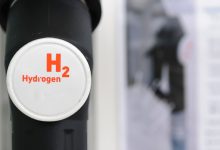Two of the world’s leading industrial manufacturers say that without strong government leadership, Australia risks surrendering its early leadership in the emerging green hydrogen industry,
Speaking to the Smart Energy Council’s virtual expo and conference on Thursday, representatives of global equipment supplier Siemens and German manufacturing giant thyssenkrupp welcomed early investments being made in Australian in green hydrogen pilot plants, but said more support would be needed to avoid Australia being dwarfed by investments being made in other countries.
Martin Hablutzel, Head of Strategy at Siemens, said that while Australia had positioned itself as an early leader in a green hydrogen industry with the development of the National Hydrogen Strategy and investments in early demonstration projects, the scale of commitments being made by other countries, particularly in Europe, could see Australia rapidly left behind.
The Australian Renewable Energy Agency is currently considering a shortlist of projects to share in $70 million in funding to support the role out of electrolysers with more than 10MW of production capacity, which would be a significant increase in Australia’s electrolyser capacity, but lags behind some of the gigawatt scale developments being pursued in Europe.
When asked about Australia’s international status in an emerging global green hydrogen market, Hablutzel said that Australia sat amongst the world’s leaders, but that more must be done to encourage the industry to develop locally to maintain its leadership position, or Australia could fall behind.
“I think it’s if anybody was going to make a list of countries globally that were somehow active or interested in hydrogen, we would be seen on that list,” Hablutzel said. “I guess my fear is more going forward that can we maintain that position? Can we work closely with Japan? Can we work closely with Germany and other leaders to stay in that pack?”
“We need strong policies to support and maintain that position. We’ve really set a good foundation and I would love to see that we maintain that momentum.”
Hablutzel pointed to the massive green hydrogen targets being set by the European Union, including an aim to build up to 6GW of electrolyser capacity over the next four years, and a long term goal of up to 40GW of electrolyser capacity by 2030.
Siemens has positioned itself as a supplier of electrolyser plant equipment and would be looking to secure significant market share in a going green hydrogen industry, both in Australia and overseas.
While Australia is making early progress in increasing its own electrolyser capacity, including through the funding being offered by ARENA and several State governments, more is needed for Australia to keep up with international pace.
“I do fear that if we don’t continue the pace and we don’t keep maintaining this momentum we will fall behind. Now that we’ve seen announcements of such scale come out from other jurisdictions,” Hablutzel added.
Green steel manufacturing is likely to be a clear early opportunity for a green hydrogen industry, with major European steelmakers already starting trials of fossil free steel manufacturing, using hydrogen to displace coal. Swedish steel giant SSAB recently completed its first green steel pilot facility, and German manufacturing giant Thyssenkrupp has also undertaken its own trials of hydrogen in steel smelters.
Also speaking to the Smart Energy Council expo, thyssenkrupp chief engineer Karan Bagga said the German manufacturer was anticipating making significant investments in its green hydrogen capabilities, called on Australian governments to consider the wider supply chain for green hydrogen when funding pilot projects, including at gigawatt scale.
“It would be my plea to the policy setters that when they pick pilot projects, that they look at it from a holistic point of view rather than an isolated stream or an isolated sector. Because we need both and there are examples in international context where this does happen,” Bagga told the Smart Energy Council expo.
Thyssenkrupp has committed to achieving carbon neutrality by 2050 and has begun incorporating the use of green hydrogen in a number of its products, including ammonia, methanol, synthetic natural gas and fertilisers. The company already has access to more than 1GW of hydrogen electrolyser capacity, and looking to grow this capacity further.
“We are partnering with Air Products and looking at installing nearly two gigawatts of electrolysis and this is completely behind the meter application. We are very busy developing concepts for this and we’re quietly confident that this project would be would success.”










